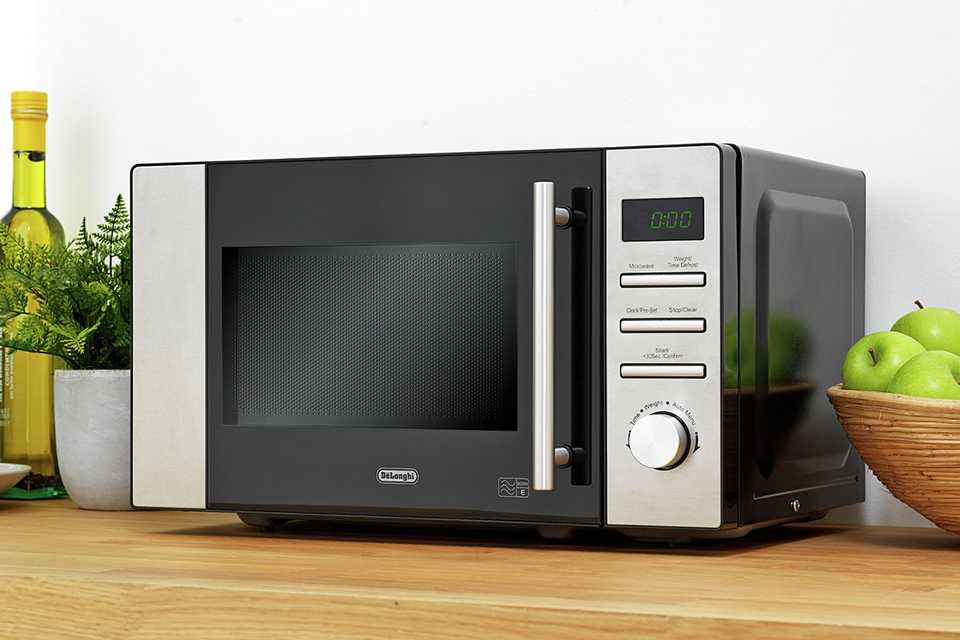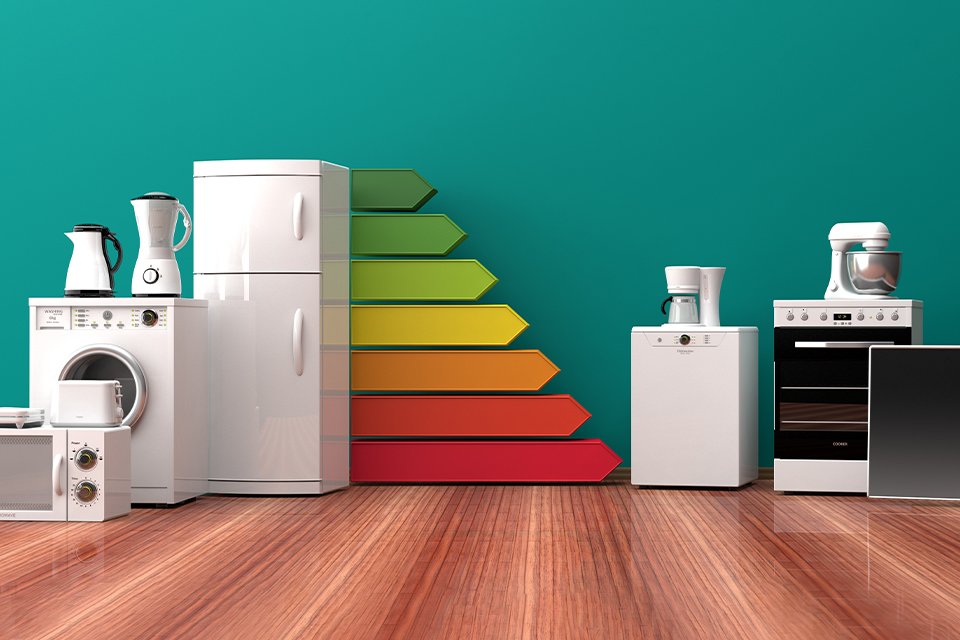Before you start: If you have a pacemaker, check with your doctor if it's safe to use a microwave. Modern pacemakers are protected against any interference, but older ones could be affected by proximity to a microwave.
What's the best microwave for you?
A microwave oven is one of the most convenient appliances to have in your kitchen. Not only do they cook food faster, they are also more energy-efficient than a full-size conventional oven. There are many types and brands of microwaves available, each with different features and settings. What type you choose depends on your needs.
Standard microwaves
Reheat leftovers, defrost frozen food, and cook simple dishes like popcorn, vegetables, and baked potatoes easily. Taking up less space on your counter-top, standard microwaves are compact, making them a popular choice for your home.
Combination microwave
A standard microwave which can also work like a convection oven but with quicker cooking times. It can heat, roast, brown, and crisp food as you would in your standard oven. They also offer a range of multi-cook options, allowing you to defrost, microwave, and grill. Some even combine an air fryer for that extra healthy and crispy dish.
Built-in microwaves
Designed to be installed into a cabinet or wall space in a kitchen, a built-in microwave can save valuable counter space. It comes with various features such as convection cooking, sensor cooking, and programmable settings. It gives you a streamlined and cohesive look in the kitchen, as it blends in with the surrounding cabinetry.
What size microwave do you need?
Microwaves are available in a wide range of sizes, from small, compact models through to larger, bulkier combi and flatbed designs. The most common microwaves have capacities between 15 and 32 litres, with a typical family sized model ranging somewhere between 20 and 25 litres.
Things to consider...
Here's a list of features to look for to help you decide which microwave option is best for you.
Microwave wattage
The power of a microwave is measured in watts. A typical domestic microwave has a wattage somewhere between 700 and 1,200 watts. In general, the more watts a microwave has, the faster and more evenly it will cook food.

Child lock
The child lock function on microwaves prevents children from using the oven unsupervised. When this feature is activated, they will not be able to start a programme, play with the buttons or interfere with the cooking process.

Integrated microwaves vs countertop microwaves
Most microwaves are designed to be placed on a kitchen counter or shelf. Built-in models have no side panels, allowing them to fit inside cupboards or cabinets. This frees up worktop space and gives a kitchen a more unified look.

Colour options
Love the classic stainless steel model? Or do you want to opt for a microwave in white, black or grey? Whichever you choose, you could even coordinate it with other appliances in your kitchen to create a cohesive look.

Lining
The majority of microwaves are lined with metal which is easy to wipe clean after use. Some models also have an antibacterial coating, which prevents the build up of bacteria, keeping it a hygienic environment for cooking.

Digital microwave or manual microwave
Microwaves are available with either digital or manual controls. Digital microwaves tend to have more advanced settings, whereas manual models are less fancy, with simple rotary dial controls for ease of use.
Flatbed microwave
A flatbed microwave is essentially a standard microwave but without a turntable. It allows a larger cooking area and more comfortable space for rectangular and square dishes. While there's no turntable the food still heats evenly thanks to the rotating antenna built inside.

Heating category
On the front of most modern microwaves is a symbol that indicates the heating category of the oven when cooking or reheating ready meals. These heating categories are rated from A to E, with E being the most powerful and A the least.

Auto cooking programmes
Some microwaves offer auto cook functions that help you prepare different kinds of food. Simply select from the menu the type of food you want to cook, then let the microwave set the optimal cooking time and heat.
Matching kettle, microwave and toaster sets
Let your style show. Go for a co-ordinated look with matching microwaves, kettles, and toaster sets that'll liven up your kitchen. Whether you like the classic steel finish or a pop of bright colour - there's something for everyone.

Microwave cookware
You should only use microwave-safe cookware. Ceramic, glassware and some plastics will be okay, but do not use anything with a metal rim or leave any twist ties on packaging as these also contain metal.
Check out what our customers are saying
Shop microwave by brands
Caring for your microwave
Make sure you place your microwave in a well-ventilated area, leaving at least 10cm space around the sides and back, with at least 20cm space above. Avoid turning on the microwave when it's empty as the microwaves can bounce off the interior, which could cause damage. You will need to clean your microwave regularly to keep it functioning correctly and maintain its condition.
Mouth-watering microwave recipes
Hello tasty dishes! Truffles, porrige or mac and cheese? With Sainsbury's step-by-step recipes, make whatever your heart desires and enjoy.

&poi={$this.metadata.pointOfInterest.x},{$this.metadata.pointOfInterest.y},{$this.metadata.pointOfInterest.w},{$this.metadata.pointOfInterest.h}&scaleFit={($this.metadata.pointOfInterest.x>0)?$sfpoi:$sfcenter}&sm=aspect&aspect=3:2&sfcenter=center&sfpoi=poi&qlt=50&fmt=auto&noiser=0&fmt.jpeg.interlaced=true&fmt.jp2.qlt=40&)


















?$sfpoi:$sfcenter}&sm=aspect&aspect=2:1&sfcenter=center&sfpoi=poi&qlt=50&fmt=auto&noiser=0&fmt.jpeg.interlaced=true&fmt.jp2.qlt=40&w=600&)
?$sfpoi:$sfcenter}&sm=aspect&aspect=2:1&sfcenter=center&sfpoi=poi&qlt=50&fmt=auto&noiser=0&fmt.jpeg.interlaced=true&fmt.jp2.qlt=40&w=600&)
?$sfpoi:$sfcenter}&sm=aspect&aspect=2:1&sfcenter=center&sfpoi=poi&qlt=50&fmt=auto&noiser=0&fmt.jpeg.interlaced=true&fmt.jp2.qlt=40&w=600&)
?$sfpoi:$sfcenter}&sm=aspect&aspect=2:1&sfcenter=center&sfpoi=poi&qlt=50&fmt=auto&noiser=0&fmt.jpeg.interlaced=true&fmt.jp2.qlt=40&w=600&)